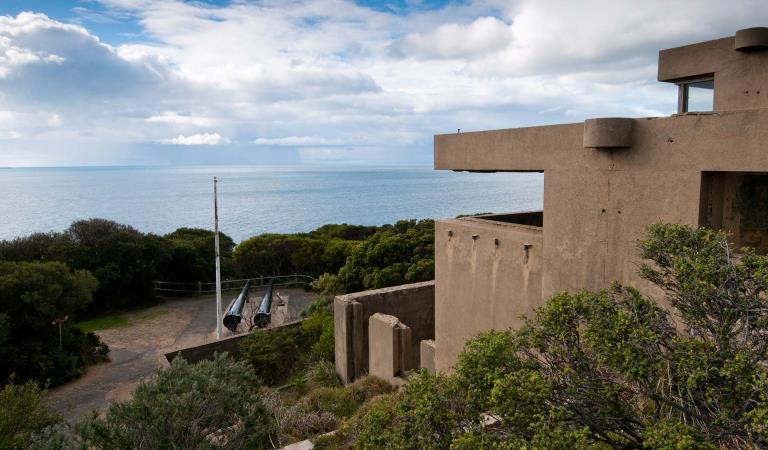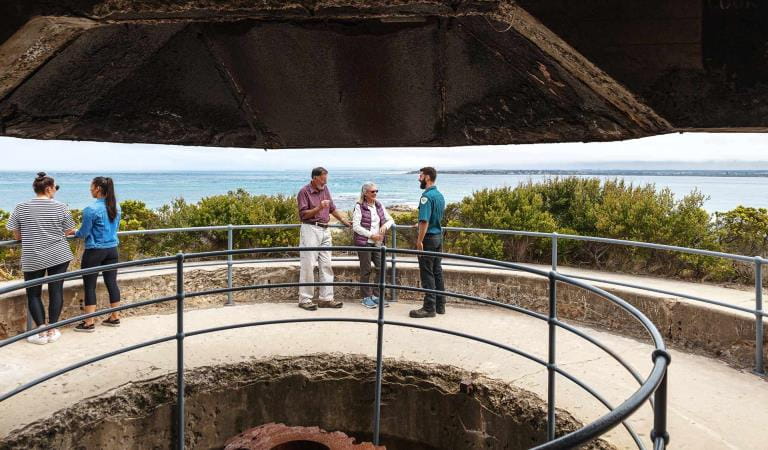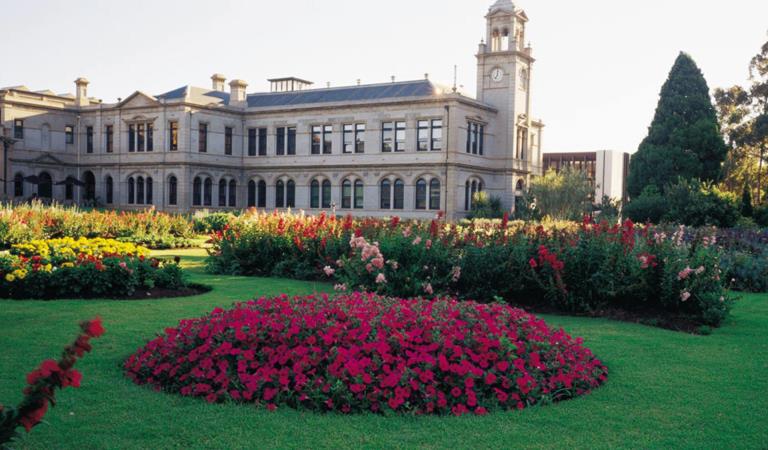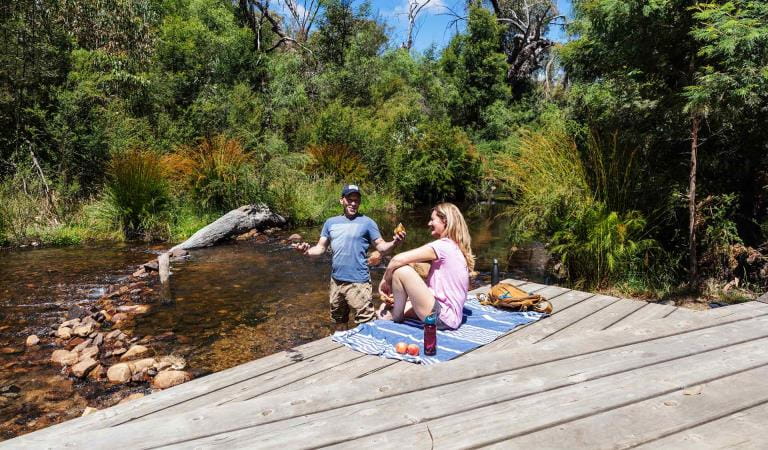This community of hospitals, disinfecting complex, morgue, cemetery and other defunct buildings comprised an infectious disease facility which processed newly arrived humans and livestock alike.
The Quarantine Station began here in 1852 on what was a desolate, windy and unwelcoming stretch of land. The extent of the facilities then was a few houses left by a community of lime burners who had vacated the area.
There have been several building phases since. The first buildings were simple wooden structures. In the late 1850s a jetty and five two-storey hospital blocks were erected.
In the 1860s a communal bathhouse was built along with a washhouse outfitted with dedicated facilities to deal with infected clothing.
A second building phase occurred in the late 19th century. The Quarantine Station was now receiving animals as well as people. A jetty for this purpose was built at Observatory Point. Other infrastructure included a school for residents and a crematorium. The latter serviced the leprosy patients who were housed well away from the main Quarantine Station.
In 1901 the Federation of Australia was proclaimed and quarantine moved from state to Commonwealth control. This resulted in a number of new processing policies. The Foul Luggage Receiving Store, Disinfection and Boiler buildings were designed and became models for quarantine centres throughout the nation.
The large centrally located Administration Building was erected in 1916. With its handsome façade the building was an impressive addition to the Station. Except for an intense period during the Spanish Flu pandemic in 1919 during which 12 wooden ‘Influenza huts’ were built, the need for isolated quarantine facilities began to lessen.
The army was billeted here during World War II, and the Station became the Officer Cadet School between 1952 and 1985. A final building phase occurred in the 1960s resulting in Army barracks, a library and gymnasium.
The Quarantine Station ceased its original role in 1980, but it continued to be used by the Army with the the School of Army Health using the facilities between 1985 and 1998.
In the 1990s, the Quarantine Station also played host to 400 Kosovars, refugees from the Bosnian War of 1992-95. During this time the Kosovars were treated to Australian hospitality. They were given bilingual support, school and a weekly allowance. Families were entertained with visits to museums, zoos, festivals and special events. By June 1999 it was declared safe for return home.
In 2009 the Quarantine Station became part of the Point Nepean National Park.
Things to do in the area
Fort Nepean
Point Nepean historic highlights
Point Nepean shuttle service
Day trips
How to get there
Quarantine Station
The Quarantine Station has a car park and is close to the entrance of Point Nepean National Park.
Shuttle bus
Alternatively, the Point Nepean shuttle service runs between the Quarantine Station and Fort Nepean.
When you're there
There are electric barbecue facilities, including a shelter and picnic tables, where you can enjoy lunch near the Quarantine Station carpark. Portable gas barbecues may be used in the Quarantine Station precinct only, except on a declared Total Fire Ban day.
There is an information display at the Quarantine Station car park within the old stables complex. For more detailed information and advice on your trip, you can continue to the main Information Centre a short walk away.
There are a series of podcasts available that tell the stories of the Quarantine Station and Point Nepean's other historical places.
Download the Point Nepean National Park visitor guide before your visit.
Need to know
Quarantine Station
Accessibility
Visiting a park can be more of a challenge for people with disabilities, however in Victoria there are a wide range of facilities to help people of all abilities enjoy our wonderful parks around the state.
Assistance dogs are welcome in Parks Victoria parks and reserves. Entry requirements apply for parks and reserves that are usually dog prohibited, such as national parks.
Change of Conditions
Nature being nature, sometimes conditions can change at short notice. It’s a good idea to check this page ahead of your visit for any updates.
-
Fort Nepean (Point Nepean National Park)
Access restricted to tracks and gun emplacements
The Engine House Walk, the circuit track at Fort Nepean, has been impacted by erosion and a section is closed for safety reasons. The outside of the Engine House can still be visited by steps.
Entry to Gun emplacements #5 and #6 is restricted at this time, however they can be viewed from behind safety barriers. We will be undertaking some works, which will hopefully allow these to be fully accessible to visitors in the future.








